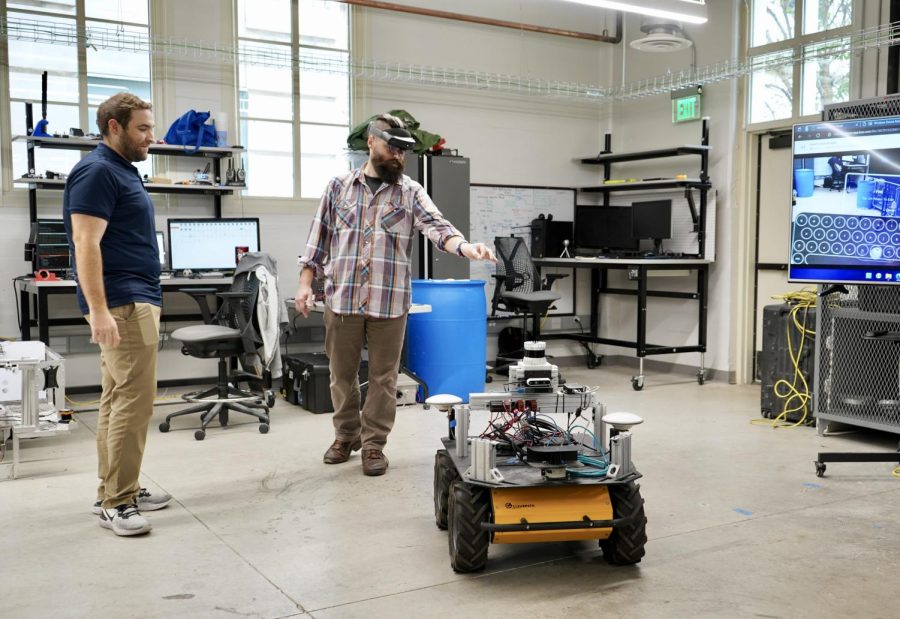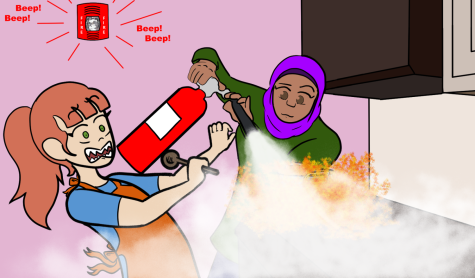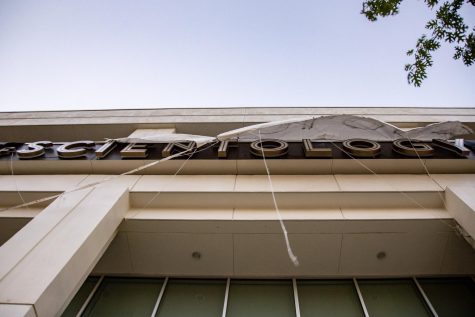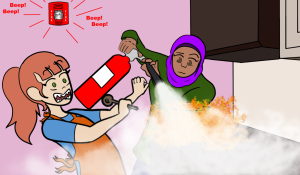UT researchers discuss advances in medical robotics at 2022 Texas Robotics Symposium
Faculty demonstrates augmented reality to observers at Anna Hiss Gymnasium, Nov. 4, 2022.
November 7, 2022
Texas Robotics showcased new advances in medical robot technology at this year’s Texas Robotics Symposium on Nov. 3 and 4.
At a panel on Friday morning, many core faculty members of Texas Robotics discussed the various uses for medical robots and how the interactions between robots and humans can improve human health. In her presentation, Ann Majewicz Fey, an associate professor of mechanical engineering, said the implementation of surgical robots could help prevent deaths caused by human error.
“If you look at the raw numbers, human-generated medical errors are actually one of the major leading causes of death in the United States and globally,” said Majewicz Fey, the principal investigator of the HeRo Lab. “While we have methods that have been developed to assist surgeons to learn surgical skills, train and be more effective, the long-term goal of the lab is to see if we can design surgical robots that can help surgeons be more personalized, effective and adaptive.”
Surgeons evaluate the competency of surgical robots by evaluating a series of skills, similar to how novice human surgeons are evaluated. Majewicz Fey’s presentation focused on a skill called bimanual coordination, or how well two robotic “hands” can work together in conjunction while performing surgery.
The HeRo Lab studied bimanual coordination in humans to gain insight into how robots could carry out coordinated movements. With the goal of deconstructing the elements of hand motion, the lab asked human participants to carry out characterized sets of movements to study functions such as interactions between dominant and nondominant hands and the difficulties of carrying out incongruent tasks, such as patting your head and rubbing your stomach.
The findings will allow members of the HeRo Lab to develop a better understanding of the components of human hand motion in order to improve the motion of robots.
The lab showed bimanual coordination and the other surgical skills they discussed in an afternoon demonstration of a da Vinci surgical robot. The first robotic surgery system approved by the FDA, the da Vinci robotic system allows surgeons to control robotically-assisted instruments, improving their field of vision and reducing the invasiveness of surgical procedures. Additionally, the system allows surgeries to be performed from a distance.
Though the robotic system has provided many benefits to surgery, researchers are still looking into a few areas of study to improve their functionality. A notable issue is that although a surgeon’s field of vision is improved through the use of da Vinci’s camera tool, they aren’t able to feel what they’re working on.
“Imagine trying to tie your shoes and you can’t feel where your shoelaces are; you can only see them. … It’s hard to pull things apart without breaking them,” said Jonathan Madera, a graduate student in the department of mechanical engineering.
On Friday, panelists, including Majewicz Fey, said though medical robot technology has continued to advance, fully automated robotic surgery is still a ways away. Separating the surgeons from the surgery brings the risk of losing out on important communication and connections between members of a surgical team, Majewicz Fey said.
“Being able to get that distributed social information in a meaningful way to individuals within the (surgical) team … would be really important for the future,” Majewicz Fey said.









